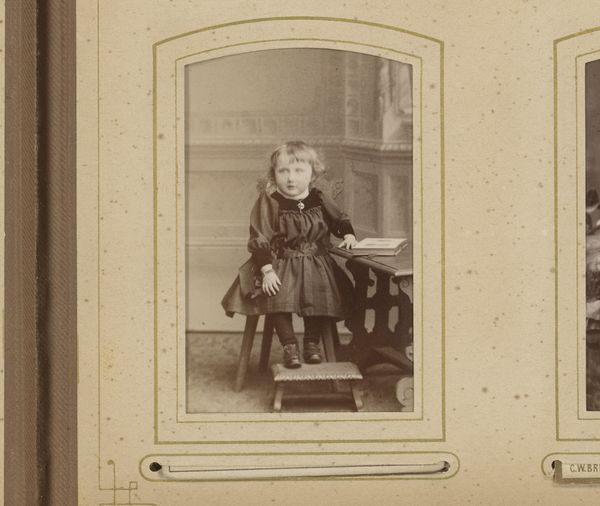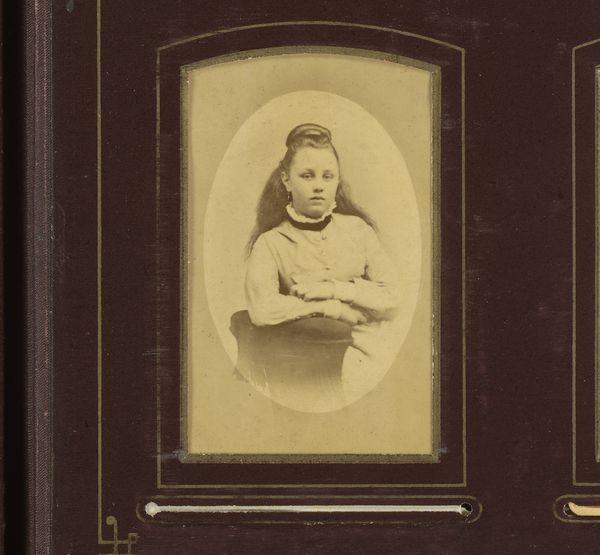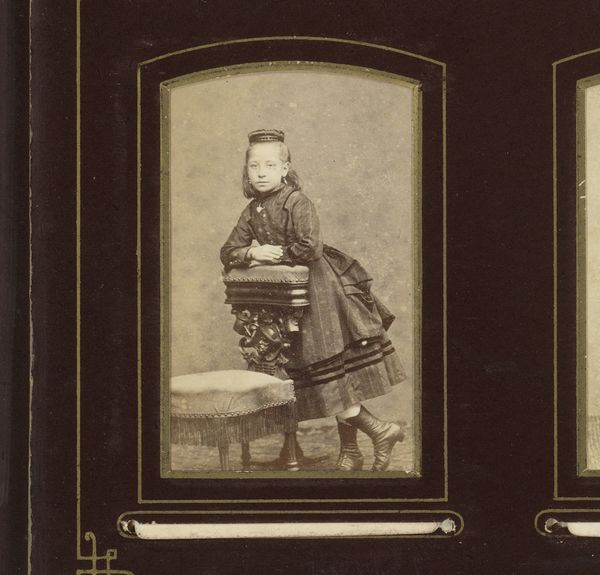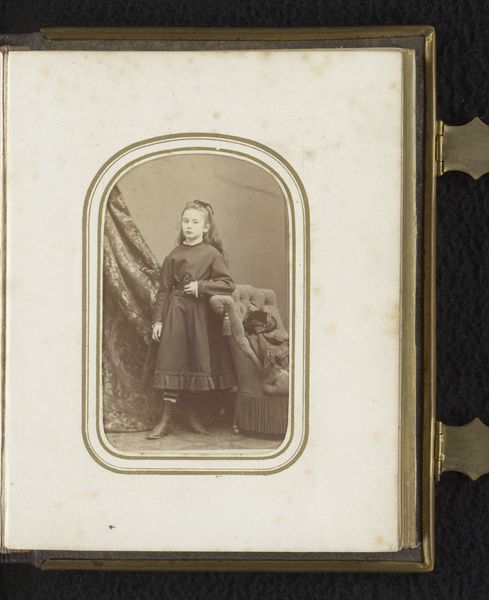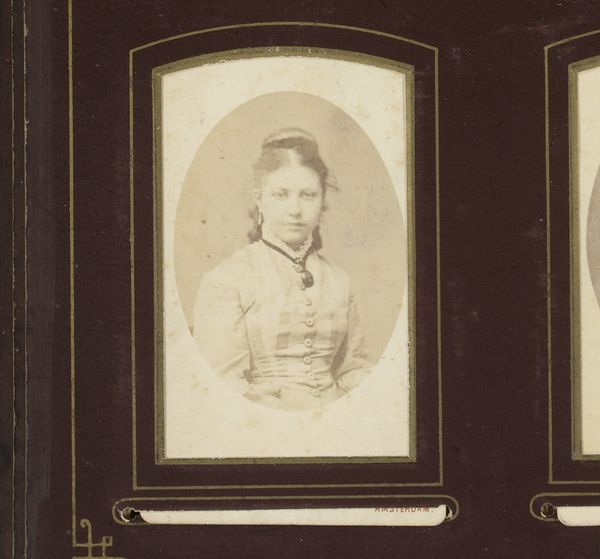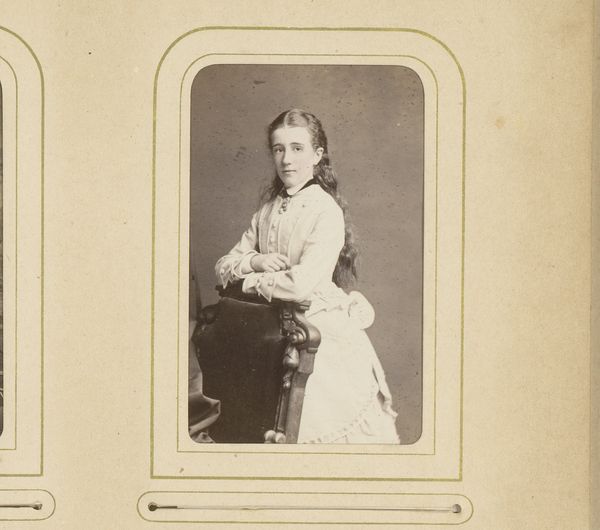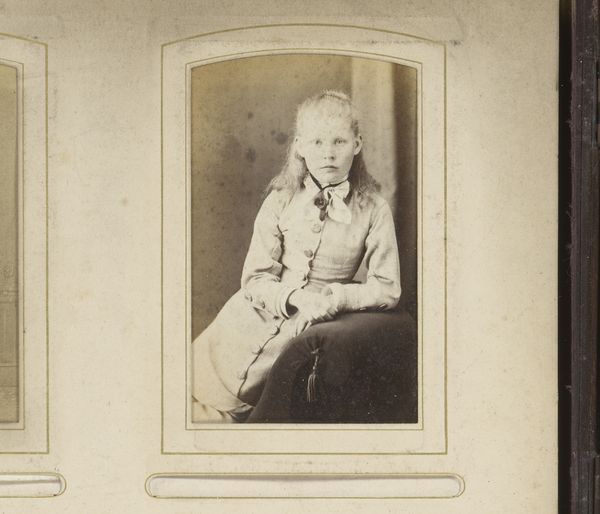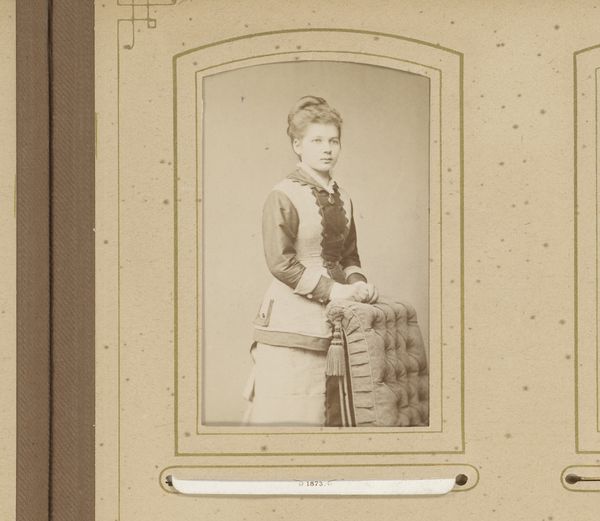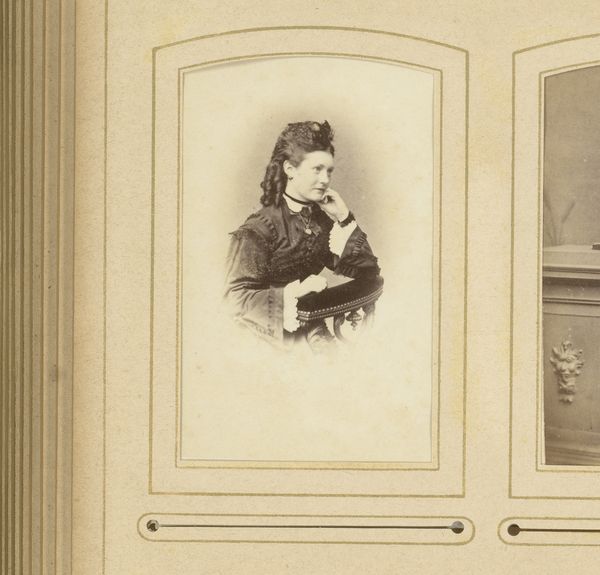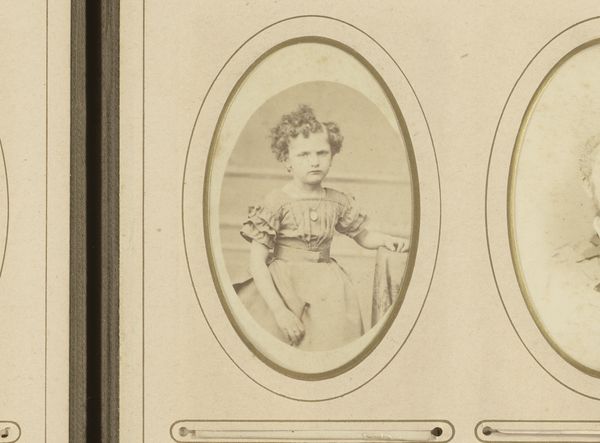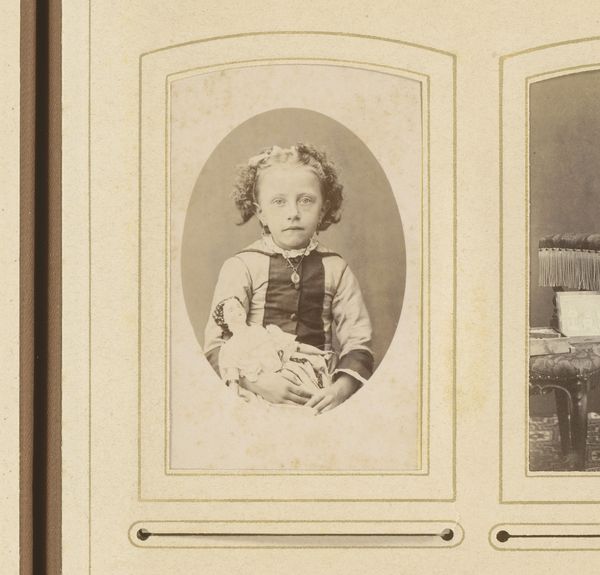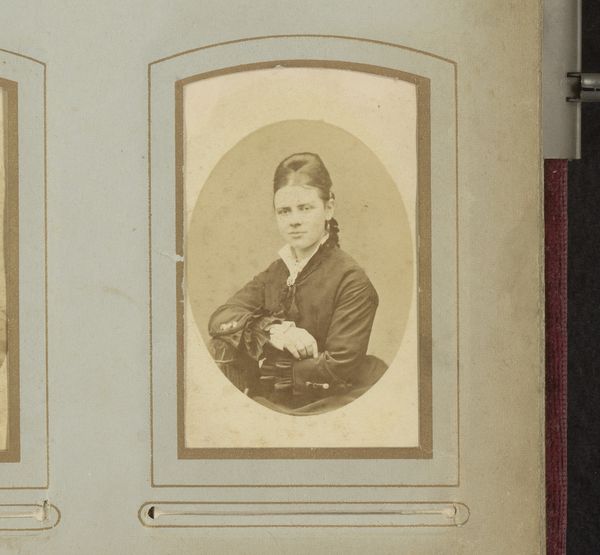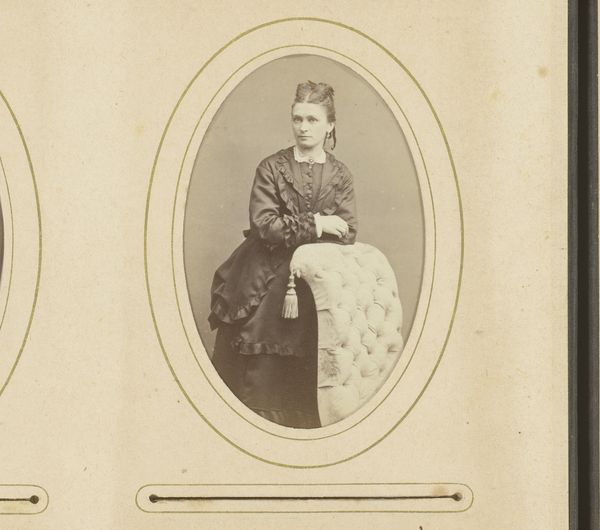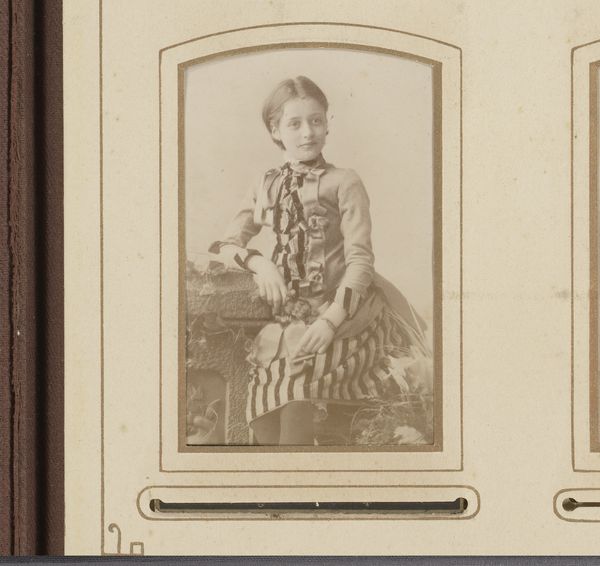
daguerreotype, photography, albumen-print
#
portrait
#
daguerreotype
#
photography
#
historical photography
#
albumen-print
#
realism
Dimensions: height 82 mm, width 50 mm
Copyright: Rijks Museum: Open Domain
Curator: Looking at this old photograph, I’m struck by a feeling of constrained elegance. What’s your initial take? Editor: Austere, I think, yet dignified. Before us we have “Portret van een vrouw, leunend op een balustrade” (Portrait of a Woman, Leaning on a Balustrade) attributed to A. Bőeseken and dating from around 1858 to 1890. The medium here is albumen print, which was immensely popular then. Curator: Ah, yes, albumen! You can almost smell the slightly rotten eggs—sorry, artistic tangent! There's this wonderful soft focus, a deliberate haziness, that transforms the young woman into a porcelain doll, don't you think? The balustrade— Editor: Balustrades in portraiture are laden with meaning. Consider how this young woman uses it, not quite leaning, not quite grasping. Is it support, or simply a prop to perform upper-class composure? Also, the gaze isn't directly engaging; it floats slightly above our eye level. She appears almost regal, in charge. Curator: Oh, absolutely! Her controlled detachment is quite captivating. But I keep wondering about her thoughts. Is she pleased with this captured image, a frozen slice of time? Or is there perhaps a hint of rebellion flickering beneath the surface? Editor: Precisely. As a photographic portrait from the latter half of the 19th century, it’s as much about performativity as it is about identity. Think about the socio-economic conditions, expectations for women… Everything, down to the dress, signals very specific messaging. What about the jewelry she wears? Do you feel like that holds more clues to identity or does it obfuscate, instead? Curator: Hides more than it tells. Perhaps these portraits tell us more about the prevailing aesthetics of that era than revealing individual personalities, so the true artistry then may be how artists like Bőeseken managed to work in personal expression within strict parameters. A touch of melancholic beauty that's both of its time and somehow timeless. Editor: It certainly serves as a complex intersection between photographic and art history, allowing viewers to engage with the intersections of identity, gender and class. Something worth reflecting on further.
Comments
No comments
Be the first to comment and join the conversation on the ultimate creative platform.
